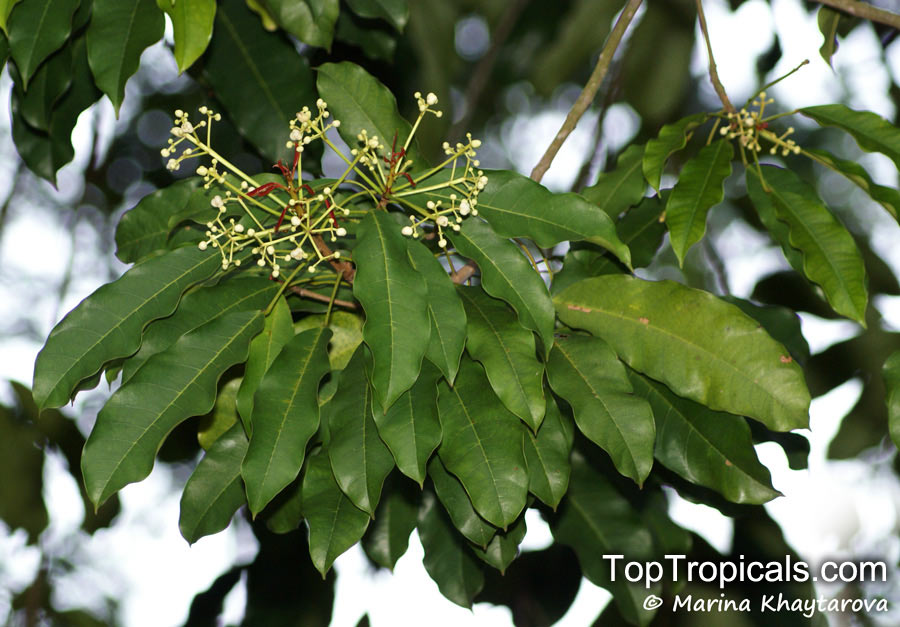Elateriospermum tapos (Kra)
Top Tropicals Plant Encyclopedia
Botanical name: Elateriospermum tapos
Common names: Kra, Perah, Tapos
Family: Euphorbiaceae
Origin: Thailand, Malay Peninsula, Sumatra, Java, Borneo







Elateriospermum tapos, better known as Kra, is a small tree native to the lands of Thailand, the Malay Peninsula, Sumatra, Java, and Borneo. Standing at heights of 10 to 20 feet and boasting large, ornamental leaves, Kra enjoys full sunlight, semi-shade, and regular watering - all of which, according to some local cultures, gives Kra important ethnomedical properties.
Kra can be grown in USDA hardiness zones 9 to 11, and appreciates soils that are moist and rich, however it is important to ensure that the soil is not waterlogged. Pruning back branches in the fall will help promote new growth, but due to the irritating sap of the tree, gloves should be worn when touching or pruning the tree. For those who live in climates with short summers, Kra can be grown in pots. When potting the tree, soil should be kept moist but not waterlogged, and the potting mix should allow for proper aeration and quick drainage. In addition, plenty of light should be provided to the plant, although direct sunlight should be avoided. The use of fertilizer can help promote vigorous growth. Although Kra can survive light frost, it cannot last in freezing or intensely cold temperatures.
Kra is characterized by white, off-white, pink, red, crimson, vinous, yellow and orange flowers that come in clusters of abundance and beauty. Ultimately, Ceiba can be grown successfully in a container, requiring full sun exposure, moderate water and regular feeding with a water-soluble fertilizer. It should also be noted that pests and diseases could infect the plant, so taking notice and rapid measures to prevent their spread should be a priority.





